5 ways wearables will transform the lives of the elderly
It's not all about Apple Watches - wearable tech is bringing radical change
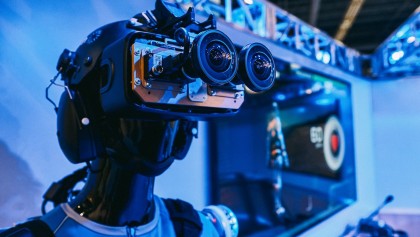
How wearables are helping our elderly loved ones
Most of us think of wearables in terms of smartwatches and fitness trackers, gadgets that can help us be fitter and more efficient. But for some people, they're far more important than that - these wearables are the difference between dependency and freedom.
They might not hit the headlines as often as the shiny new wrist jewellery from Apple and Samsung, but wearables for older people are fast becoming an essential way to keep them safe, healthy and happy.
It's early days yet, but already we're seeing some impressive technological innovation to improve the lives of those later in life - and the even better news is they'll be easy enough for even the most averse of technophobes to use safely and happily.
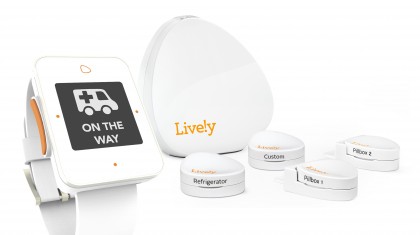
1. Keeping them safe
Everyone wants their loved ones to be safe, and in the case of older relatives and friends, the risks are more worrying, especially if you live a distance away. Wearables can help keep these people safe by connecting them to relatives or the emergency services in the event of an accident - even if they're unable to call for help themselves.
The Kickstarter-funded KanegaWatch from UnaliWear - available for sale later this year - can detect falls and long periods of non-movement and raise the alarm.
Working through voice control and without the need for a connected smartphone, the watch notices if the wearer has been immobile for a while and asks if they're OK. If there's no response, the device can contact designated people or the emergency services. It also records some location information so it can guide the wearer home if they get lost.
There are no buttons - it's all done by voice, with the watch having a name set by its owner that it responds to. The wearable even offers medication reminders at appropriate times, reading out dosage instructions if the user asks for them.
Similarly, the CarePredict wearable monitors sleep, personal care and daily patterns, alerting carers if something seems out of the ordinary: if the wearer used the bathroom more than usual last night, for instance, or got up later than they normally do.
Lively's Safety Watch system goes a step further, using a home hub connected to a series of sensors around the home to check that medication's been taken, meals haven't been missed and the user is moving around as normal.
If something's amiss, the watch will remind the wearer, then alert family members or carers if things don't go back to normal.
The hub doesn't require a phone line or internet connection, and the activity sensors are designed to attach to household objects including pill boxes and fridge doors.
Of course, the fact that the fridge door's been opened doesn't mean your relative's necessarily had a meal, but the hub can compare data over time to assess what seems normal for that person - and it's more useful than no data at all.
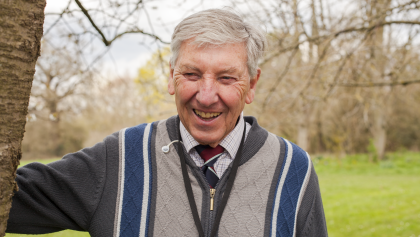
2. Keeping them nearby
Sadly, some older people are more at risk of wandering off due to conditions like dementia, which can lead to frantic searches and vulnerable patients unable to find their way home. The upcoming Proximity Button, invented by the daughter of a dementia carer, is designed to be an effective and affordable way to keep loved ones safe without intrusive tracking.
Connecting to the carer's phone with Bluetooth, the button simply sends an alert when the patient goes out of bounds.
Creator Natalie Price tells techradar that the design was a particular challenge in testing: "It's very common for people living with dementia to become upset with things that they aren't familiar with.
"Those wearing the earlier bracelet prototype kept asking me if I wanted my watch back, or fiddled with the strap in an agitated way. The pendant prototype didn't cause any discomfort issues, but was too easily removed.
"The badge prototype came out on top. Once attached, the person wearing the badge completely forgot it was there, and it stayed in place. The design has been tested and has proved totally successful; it's discreet and doesn't cause any discomfort."
The Proximity Button will begin crowdfunding this summer through Indiegogo.
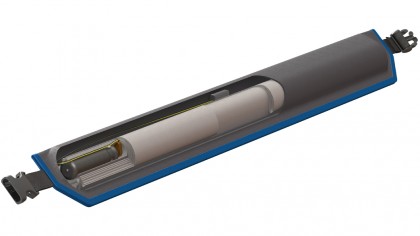
3. Saving them from falls
One of the biggest concerns for older people is the risk of falling over and breaking a hip, particularly as the injuries can be difficult to recover from in later life. One of the more radical ways tech firms are addressing this is by developing wearable airbags that automatically deploy when a fall is detected.
While it might seem extreme to wear an airbag all the time, products by companies like Philadelphia's ActiveProtective and the Netherlands-based Wolk Company are worn as belts, making them less intrusive and noticeable. Packed inside the (admittedly quite thick) ActiveProtective belt is a folded airbag, a fall-detection system and a gas inflation mechanism to quickly open the airbag when the wearer is falling.
Neither product has reached the mass adoption yet, but ActiveProtective's claim that 1 in 3 people over 65 take a fall every year suggests they won't be short of customers when they do.
For people more at risk of falling because of conditions like peripheral neuropathy (where damaged nerves can make it difficult to walk) tech can help in a different way.
California company WalkJoy has created a device that straps around the knees of people who've lost sensation in their feet, and replaces the signals their foot would usually send to the brain. This completes the circuit (known as a feedback loop) and allows them to walk unaided again.
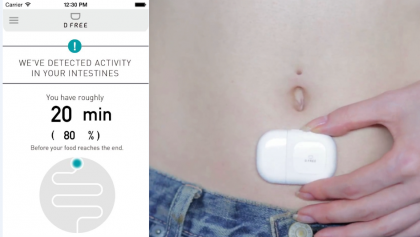
4. Giving them freedom
Some of the health problems that can affect older people aren't so easy to talk about. The Dfree website opens with the memorable words: "Two years ago I got sudden diarrhea and pooped my pants on the street."
While most of us would never speak of this again, in this case it led to the development of a device that claims to predict bowel movements, allowing users to plan ahead and get to a bathroom in time.
Using an ultrasound wearable belted around your stomach, Dfree sends a push notification (no pun intended) to the accompanying app on your phone to let you know how much time you have.
This could avoid the kind of incident that decimates older people's confidence and makes them less willing to leave the house.
After some teething problems with skin irritation, Dfree is still in development but Japanese manufacturer Triple W received seed funding for the device earlier this year.
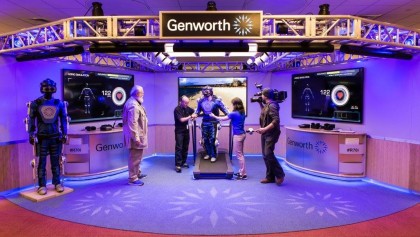
5. Helping us understand what it's like to be them
It's easy to grasp the fact that we'll all be old one day, but significantly harder to imagine what that will actually be like. Many of us prefer to think the world will somehow have radically changed by the time we age, or that we'll be defiantly break-dancing in our own homes at the age of 90.
To bridge the empathy gap, insurance company Genworth and innovation firm Applied Minds teamed up to create an 'ageing suit' - a wearable in the most literal sense - that simulates some of the conditions associated with getting older.
The adjustable exoskeleton can show you what it's like to live with cataracts, tinnitus, hearing loss, joint pain, arthritis and a range of other conditions, in a realistic and accurate way.
Genworth CMO Janice Luvera told techradar, "Education through experience is the best way to build empathy and awareness, to engage and educate consumers in hopes of inspiring a conversation about growing older with loved ones."
That first-hand experience really seems to work. When techradar tried a similar ageing suit earlier this year, Editor Gareth Beavis commented, "my overwhelming feeling was one of frustration, my body and mind desperate to break out of the restrictions and just start running freely again."
Growing older isn't something you can really comprehend until you've experienced it, but tech like this moves us a lot closer to understanding what it's like. And that can only be a good thing for the next round of lifesavers for seniors.